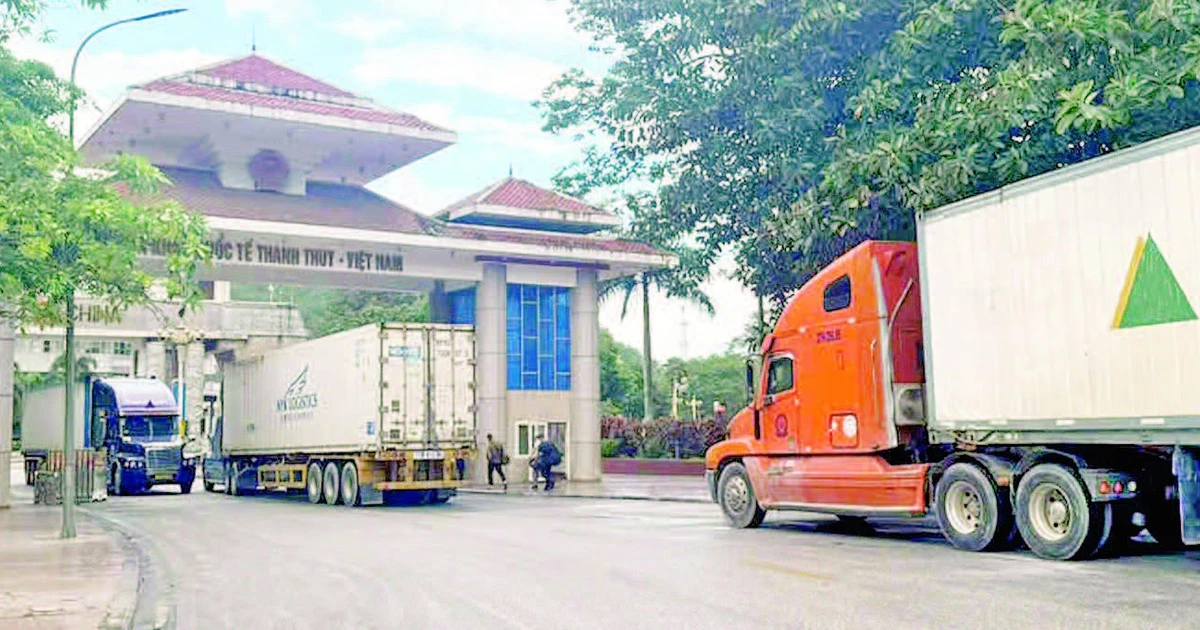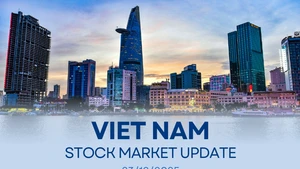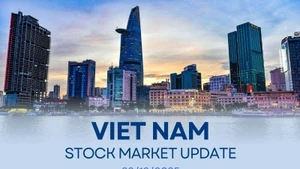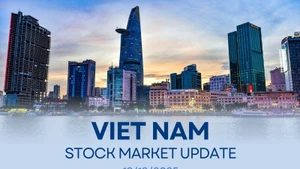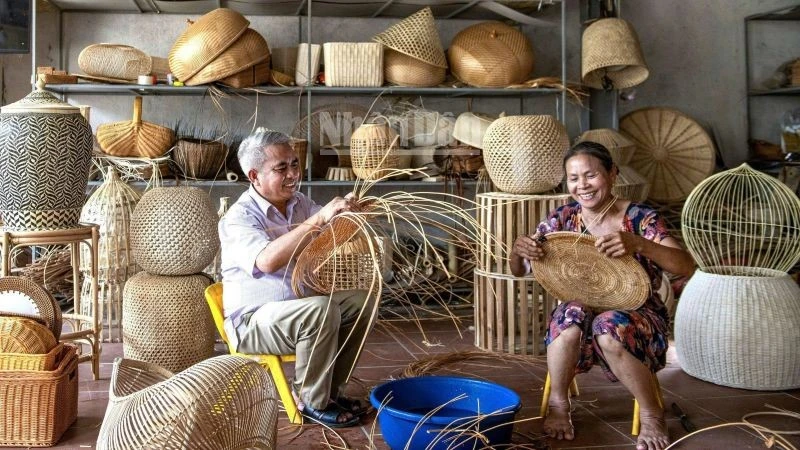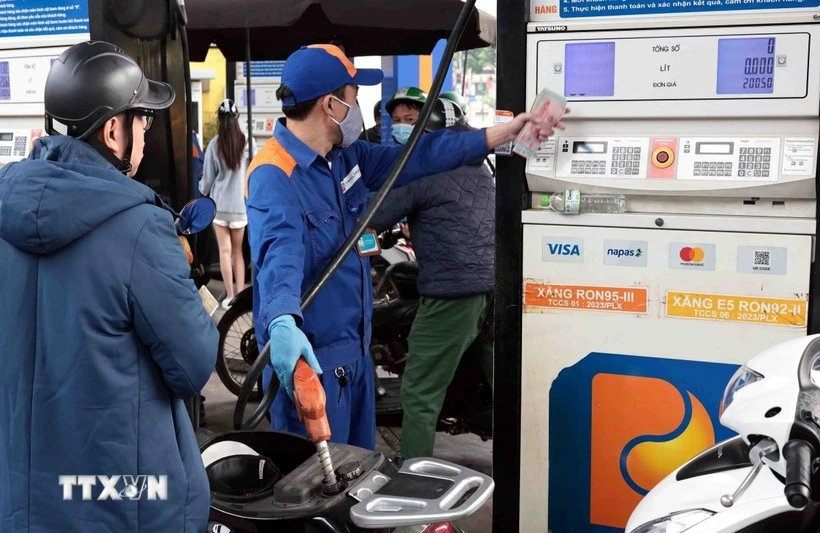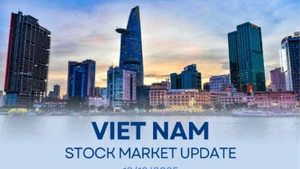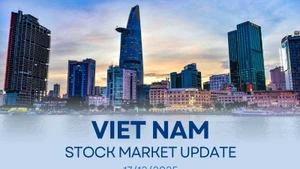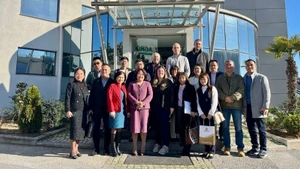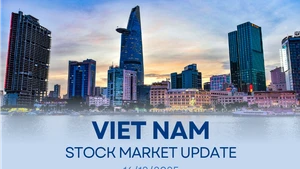However, limitations in infrastructure, investment policies, and land-use planning continue to hinder the full realisation of the zone's potential.
Following its establishment, the economic zone has received focused investment in infrastructure development in the central area of Thanh Thuy Commune, covering over 100 hectares. To date, approximately 600 billion VND has been invested in land clearance, the construction of internal roads, power systems, functional buildings, and logistics facilities within the zone.
Currently, two key projects are underway with a total investment of several hundred billion dong. These include the construction of an inter-agency inspection station and a road connecting National Highway 2 to the Na La border trade centre. These are strategic projects that aim to improve customs clearance capacity and upgrade transport infrastructure to better serve import-export operations.
After years of investment, the zone's infrastructure now broadly meets the needs of import-export activities and border crossing, especially attracting interest from enterprises. To date, the zone has attracted over 40 investment projects, with a total registered capital exceeding 1.22 trillion VND, mainly in import-export services and warehousing.
According to Hoang A Chinh, Head of the Ha Giang Economic Zone Management Board (Tuyen Quang Province): “The current capacity of the economic zone can handle 100 to 200 container trucks of goods passing through Thanh Thuy International Border Gate each day. This is the result of comprehensive infrastructure investment in recent years.”
In addition, relevant authorities at the Thanh Thuy International Border Gate have been actively streamlining administrative procedures and applying information technology throughout the documentation process. All import-export procedures are now conducted online, helping to reduce time, effort, and costs for businesses.
Thanks to these synchronised measures, import-export activities at Thanh Thuy International Border Gate have become increasingly dynamic. In the first half of 2025, the total trade turnover reached over 312 million USD, a 132% increase compared to the same period in 2024. Over 11,000 people and nearly 7,000 vehicles crossed the border, and the total tax revenue collected exceeded 145 billion VND - up about 25% year-on-year.
Despite this promising progress, the performance of the Thanh Thuy Border Gate Economic Zone still falls short of expectations. One major reason is limited infrastructure investment, which remains inadequate for comprehensive development. Many areas within the economic zone’s master plan either lack detailed planning or have not undergone land clearance due to funding shortages, leading to a nearly exhausted supply of cleared land, especially land suitable for attracting large-scale projects.
Geography also poses a challenge to the development of border gate economy. Hoang A Chinh noted that Thanh Thuy International Border Gate lacks the comparative advantages of other major border gates in the region. The only connection to Ha Noi is National Highway 2, which is both narrow and distant, making it difficult to attract businesses to engage in import-export activities. Most existing projects are small-scale warehousing services, with no major, high-impact projects. The absence of specific preferential policies on land, finance, and taxation has also hindered investment attraction.
In response, local authorities are working to overcome these challenges and stimulate border economy development. Improving transport infrastructure has been identified as a key solution. Notably, the Tuyen Quang–Ha Giang Expressway (connected to the Tuyen Quang–Phu Tho Expressway), which began construction in May 2023, is expected to be completed in 2025. Once finished, it will reduce traffic on National Highway 2 and shorten travel time between the border gate and major economic centres, facilitating smoother goods circulation.
The province is also building a bridge linking National Highway 2 to the eastern bank of the Lo River in Pha Han hamlet (Thanh Thuy Commune), while simultaneously planning zoning adjustments to expand the land fund within the economic zone. These efforts aim to attract large and high-value-added investment projects, thereby enhancing land-use efficiency and contributing to the state budget.
On the policy front, relevant departments and sectors have studied and proposed tailoured incentive mechanisms to attract investment and create a transparent and favourable business environment. Meanwhile, the promotion of the zone’s potential and strengths has been intensified to draw interest from domestic and international investors.
According to Nguyen Thi Quynh, Deputy Head of Thanh Thuy International Border Gate Customs, the province previously established an Import-Export Association. However, its current operations have been ineffective. Therefore, in the coming time, the province needs to support the association’s continued operation to serve as a liaison with Chinese import-export businesses, enabling domestic enterprises to access timely information and proactively engage in import-export activities.
